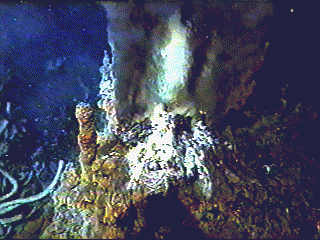Waldo Tobler’s “First Law of Geography” states that all objects are related, but that close objects are more related than far objects. This seeming truism is axiomatic for much of geography and spatial science. Less frequently discussed is the contrapositive: if an object does not preferentially effect its neighbors, then it is, presumably, breaking the First Law of Geography. Does it follow that such an object is non-geographical? If so, what is it?
Consider the Greenland Ice Sheet. It sits atop a mountainous island at high latitudes; to look at a satellite image of the north Atlantic is to see a landscape dominated by white ice. But the Ice Sheet exhibits perplexing non-locality in a number of ways—chilly action at a distance.
The dominant symbolic presence of the Ice Sheet in Western media is as a threat—a boreal Sword of Damocles poised to melt and drown coastal humanity. But setting aside colonializing synecdoches (“Greenland is Melting,” etc.), it is worth pointing out that coastal Greenland is not in danger of sinking—due to glacial rebound, the rocky island is in fact rising steadily above the waves. It is faraway southern shores that will experience the consequences of Greenland’s melting ice.
Another western cliché is to write of AGW’s enormous impact of AGW on Greenland’s culture and economy—for ill and for good. Either the receding sea ice is annihilating traditional hunting lifestyles; or rising temperatures are welcoming an economic renaissance (mining under the melted ice; a new Northwest Passage; arboriculture and produce farms). But the truth on the ground is more ambivalent. In fact, AGW may just not be as big of a deal to Greenlanders as Western media might suggest—and maybe Greenlanders are growing sick of southern environmentalists and other concerned parties coming to ask them “what they think.”
But the nonlocality is starkest in the occupancy of the ice sheet itself. Intimacy with sea ice has always been central to Greenlandic technology. The ice cap, however—a mile-high tower of fauna-less ice, typically separated from the coast by rugged mountains—has historically been free from human footsteps, with the exception of Western militaries and (typically) Western scientists. These scientists arrive in Greenland from overseas and mount the ice cap in helicopters; they gather data and transmit it south to mainland universities, where it drives apocalyptic narratives in Western newspapers.
Here the ice cap primarily functions as a data source—sitting atop the world and transmitting messages to southern receptors, in the form of ice cores and .csv files. This system does not require humans to function; in this framework, an iceberg is a mobile data structure: an icy messenger.
The potential volume of data is enormous. If a typical ~1.00 m3 ice core returns a ~3000 KB dataset, even a small 10,000-ton iceberg[i] represents 29.6 GB. [1]
It is worth considering what message, exactly, the ice is transmitting. In Sidereum Nuncio, Galileo generated hyper-dense data structures by typologizing the relative positions of Jupiter’s moons. The immediate observation was that the moons were in orbit around the central body; the more profound message led to a cataclysmic de-centering of the human in the universe.
[1] ftp://ftp.ncdc.noaa.gov/pub/data/paleo/icecore/greenland/negis2012chem.txt
